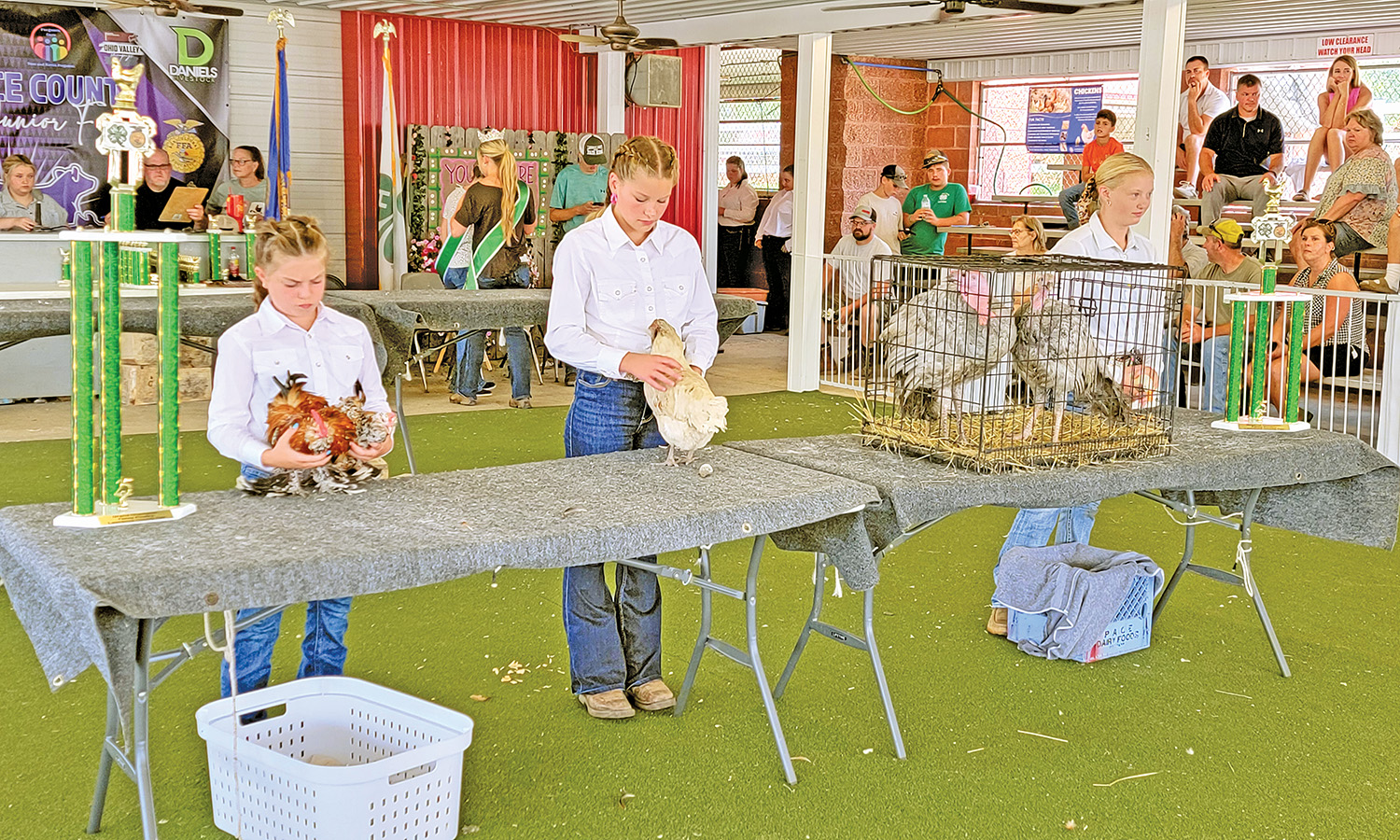Science teachers go back to school
Published 12:00 am Thursday, September 11, 2003
COAL GROVE - After teaching for 32 years, Burlington Elementary teacher Sue Wills went back to school Wednesday.
"Face it, times have changed, and if you're not willing to change, you don't need to be teaching," she said.
During the day, approximately 30 third through eighth grade teachers from five Lawrence County school districts: Chesapeake, Dawson-Bryant, Rock Hill, South Point and Symmes Valley took a day off from teaching to attend class at a year-long in-service program designed to assist teachers in developing challenging units that integrate Ohio's new science and technology standards. The program consists of four face-to-face sessions during the school day on Sept. 10, Nov. 20, Jan. 30 and a final meeting in late April and participation in professional development activities via the Internet and videoconferencing. After this first year of this pilot program, the teachers will implement what they have learned in their classrooms.
Trending
After surveying teachers throughout the county, the results concluded that many teachers wanted more professional development activities in science, said Nelrose Coffman, curriculum supervisor for the Symmes Valley district. The virtual and face-to-face meetings with teachers give them the opportunity to bounce ideas off each other.
The pilot program will conclude with an assessment of how it worked, said Donald Washburn, a curriculum supervisor for the Lawrence County Educational Service Center. The county may do similar activities for math, social studies and language arts teachers.
Another reason for the program is the federal No Child Left Behind Act, which requires sustained professional development, Washburn said.
"In-service will no longer be one day in the fall. It will be ongoing teacher support in which their questions are answered." he said.
Some of the new techniques taught to the teachers involve inquiry based instruction. Using this method, teachers pose questions to students who are asked to answer the questions scientifically, Coffman said. One of the activities the teachers participated in Wednesday involved taking an egg and designing an experiment in which someone can determine whether or not the egg is hard-boiled - without cracking it.
The Internet professional development activities and online communication between teachers will be done by using a program known as Blackboard, Coffman said. In the future, this program may be used for offering online classes to students, so teachers will need to know how to use it.
Trending
Altogether, the program will cost approximately $90,000, Washburn said. However, the five districts coming together for it will help offset costs, and the program is more economically practical because of the number of teachers involved. Some of the money came from sources such as federal grants and in-service money. The professional development came from sources such as Ohio University and Pilasco-Ross.
Colleen Sexton, an associate professor of science education from Ohio University's Athens campus, was one of the instructors during Wednesday's session. Sexton complimented the teachers on their receptiveness and complimented Lawrence County on its overall job of continuously improving in science. However, some areas are still stagnant, she said. In this program, those working with the teachers hope to address those areas as well as keep up the areas in which schools exhibit good performance.
One of Ohio's responses to the No Child Left Behind Act is making teachers accountable, and one of those methods is the definition of a "Highly Qualified Teacher". This program may count toward hours required under No Child Left Behind's Highly Qualified Science Teacher Guidelines.
This area has resulted in some frustration amongst teachers, Sexton said. Some science teachers have been teaching for many years with a K-8 certification, not a new 7-12 certification. Many of them are highly successful teachers who have proven themselves in the classroom.
"But on paper, they're not a highly qualified teacher," Sexton said.
However, the No Child Left Behind Act could be a positive for students in special education classes. All students must have access to the same materials, Washburn said. Each school district brought at least one special education teacher, he said.
Karen Sands, an intervention specialist at Rock Hill Elementary, said she was pleased with the work she did at the program. Until last year, students were exempted from scoring on proficiency testing. It would be very unfair for students in special education classes to be expected to take a test without access to the content that other students are learning, she said.
The program also gives teachers the chance to collaborate with ones who teach special education classes, South Point Middle School special education teacher Stacey Wise said.
The activities the teachers participated in could be used to strengthen areas besides science, Rock Hill Elementary teacher Rhonda Hacker said. Activities like one involving temperature and water level involved mathematics as much as science.
"They hit math and reading. It wasn't just limited to science," she said.





